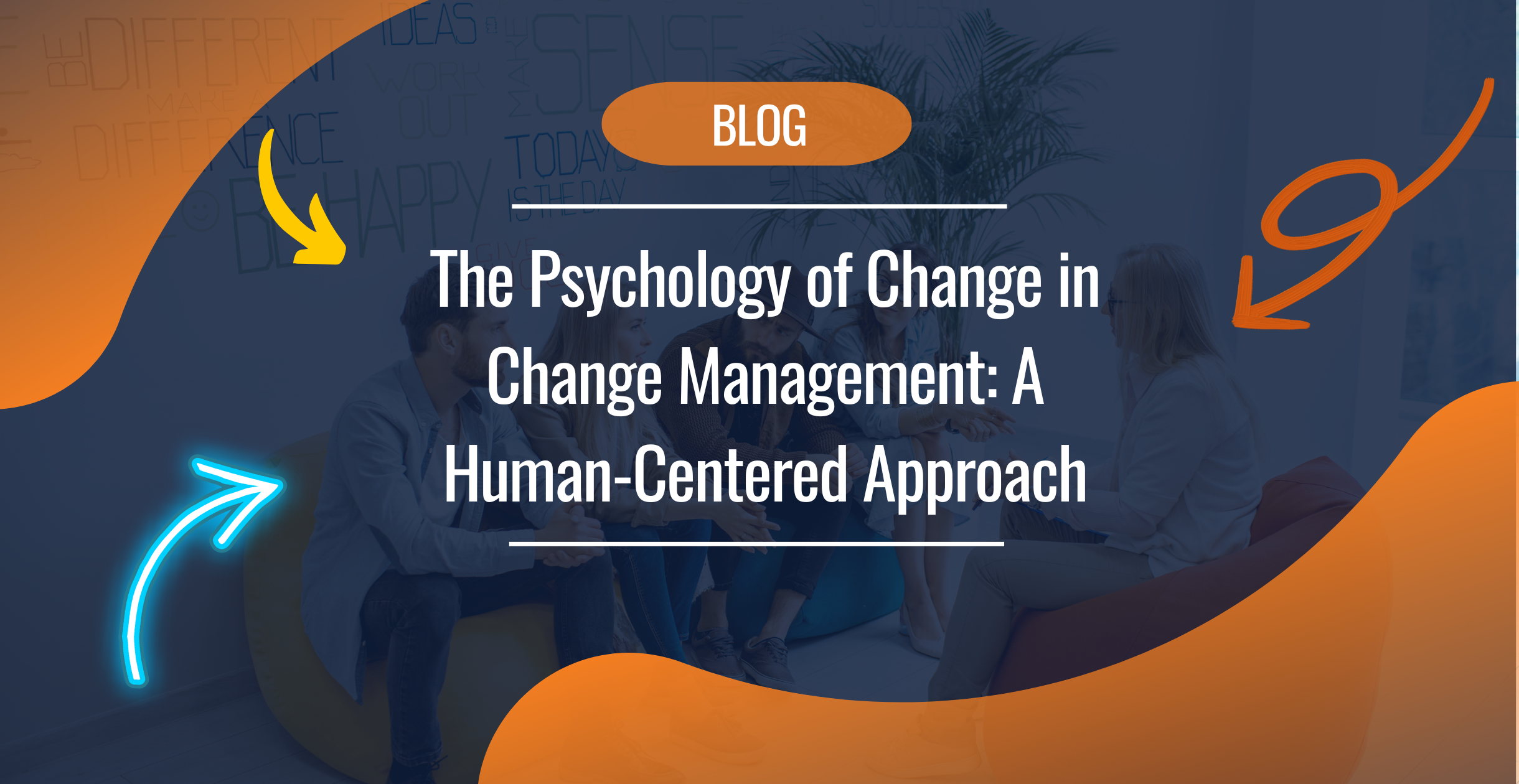Change is a constant force in all business landscapes, yet managing change effectively is anything but simple. When we look at the psychology of change in the context of change management, we find that it is, at its core, a deeply human-centered practice. Change management is about more than implementing new processes or technologies; it’s about understanding human behavior, emotions, and motivations. For organizations, this realization can make the difference between successful, sustainable change and fleeting, ineffective attempts.
Understanding the Human-Centered Nature of Change Management
At the heart of every successful change initiative are those who must adapt, buy into, and sustain the changes introduced. Recognizing that change is human-centered means acknowledging that people experience change in diverse, often complex ways. Research underscores this point: According to a recent study, approximately 70% of change initiatives fail, primarily due to employee resistance or lack of adequate support from leaders. This staggering figure highlights that a purely top-down approach, focused solely on structural or technological changes, often misses the mark.
Why is change so difficult for people? For many, change signals uncertainty, which triggers anxiety and fear—a natural response deeply embedded in human psychology. These responses stem from the brain’s fight-or-flight mechanism, designed to protect us from potential threats. As change disrupts familiar routines, people may instinctively resist it to maintain stability. Recognizing and addressing these psychological responses is critical in making change management a human-centered practice.
The Importance of Human Buy-In for Change
A common misconception in change management is that once a change has been communicated, it’s simply a matter of execution. However, genuine human buy-in is essential for change to take root. People must understand, support, and emotionally invest in the changes they are asked to implement. Without this buy-in, change efforts will likely fail, regardless of how technically sound or financially beneficial they may be.
Building Buy-In Through Communication and Trust
Buy-in is most effectively achieved when employees feel involved and valued. According to Gallup, organizations that actively engage employees in their change initiatives experience a 24% increase in productivity and up to a 59% decrease in turnover. This engagement requires two things:
- Clear, Transparent Communication: When leaders openly communicate the reasons behind the change, its goals, and its expected impact on employees, people are more likely to feel secure and included.
- Involvement in the Process: When employees are involved in decision-making or have opportunities to provide feedback, they feel a sense of ownership over the changes. They can trust what is happening.
A study by Prosci found that employee participation can increase the likelihood of successful change by 40%. Trust helps counteract the fear and uncertainty associated with change, making employees more likely to support and embrace new initiatives.
Change as a Process: Phases of Adaptation
Another essential psychological insight in change management is that change is a process, not an event. People experience change through various stages of adaptation, and organizations must be prepared to support employees throughout these stages.
The Kubler-Ross Change Curve, initially developed in the context of grief, illustrates the psychological phases people experience during change: denial, anger, bargaining, depression, and acceptance. While not every change elicits this full spectrum, understanding these phases can help leaders anticipate and address the emotional responses that employees might experience. By recognizing these stages, organizations can design change processes that guide employees through the psychological journey, offering appropriate support and resources.
Practical Steps for Supporting the Change Process
- Pre-Change Communication: Informing employees about upcoming changes early and thoroughly can help reduce initial shock and resistance. This involves explaining the “why” behind the change, highlighting its benefits, and openly addressing concerns.
- Ongoing Support and Training: Offering training and development opportunities can alleviate anxiety and empower employees to engage confidently with new processes or technologies. The American Psychological Association reports that 60% of employees are more likely to engage positively with change when provided adequate training and resources.
- Feedback Mechanisms: Creating channels for continuous feedback throughout the change process allows organizations to respond to concerns, make adjustments, and show employees that their voices are valued.
- Recognition and Rewards: Recognizing efforts and successes at different stages reinforces positive behavior and helps sustain momentum. A report by Deloitte found that recognition programs can improve morale, with employees being 31% more likely to feel motivated to contribute to change.
Why This Human-Centered Approach is Crucial for Organizations
Understanding change as a psychological process and implementing a human-centered approach is crucial for several reasons:
- Increases Resilience: Organizations considering the human element in change management are more adaptable and resilient. By addressing core psychological needs, they cultivate a workplace culture that fosters trust and engagement, paving the way for continuous improvement.
- Reduces Resistance and Turnover: When employees feel heard, involved, and supported, they are far less likely to resist changes or seek opportunities elsewhere. According to a survey by PwC, 48% of employees say they would feel more committed to their organization if they felt part of a supportive change culture.
- Enhances Productivity and Performance: When employees buy into change, their productivity and performance increase, which drives the organization’s success. Research from Bain & Company shows that organizations with effective change management practices are 3.5 times more likely to outperform their competitors.
- Builds Trust in Leadership: Leaders who show empathy and prioritize employee well-being during change initiatives foster trust and respect. This trust is a valuable asset for organizations, creating a foundation for future change efforts. Trust also enhances collaboration, which is vital for innovation and organizational growth.
Key Takeaways for Organizations Embracing Change
- Change is a process that involves the whole organization: Employees need time, understanding, and resources to adapt successfully. By approaching change as a journey, organizations can ensure that each stage is handled with care and foresight.
- Human-centered change management is vital for success: Recognizing the psychological aspects of change can help leaders create empathetic, inclusive, and empowering strategies.
- Effective communication and involvement are non-negotiable: Open, transparent communication and a culture that embraces varied perspectives are vital for securing buy-in and sustaining meaningful change.
By acknowledging the psychology of change and understanding how it intersects with change management, organizations can approach change and transformation in a way that is sustainable, empathetic, and impactful. This human-centered approach boosts the success rate of change initiatives and strengthens the organization’s culture, paving the way for future growth and adaptation.







